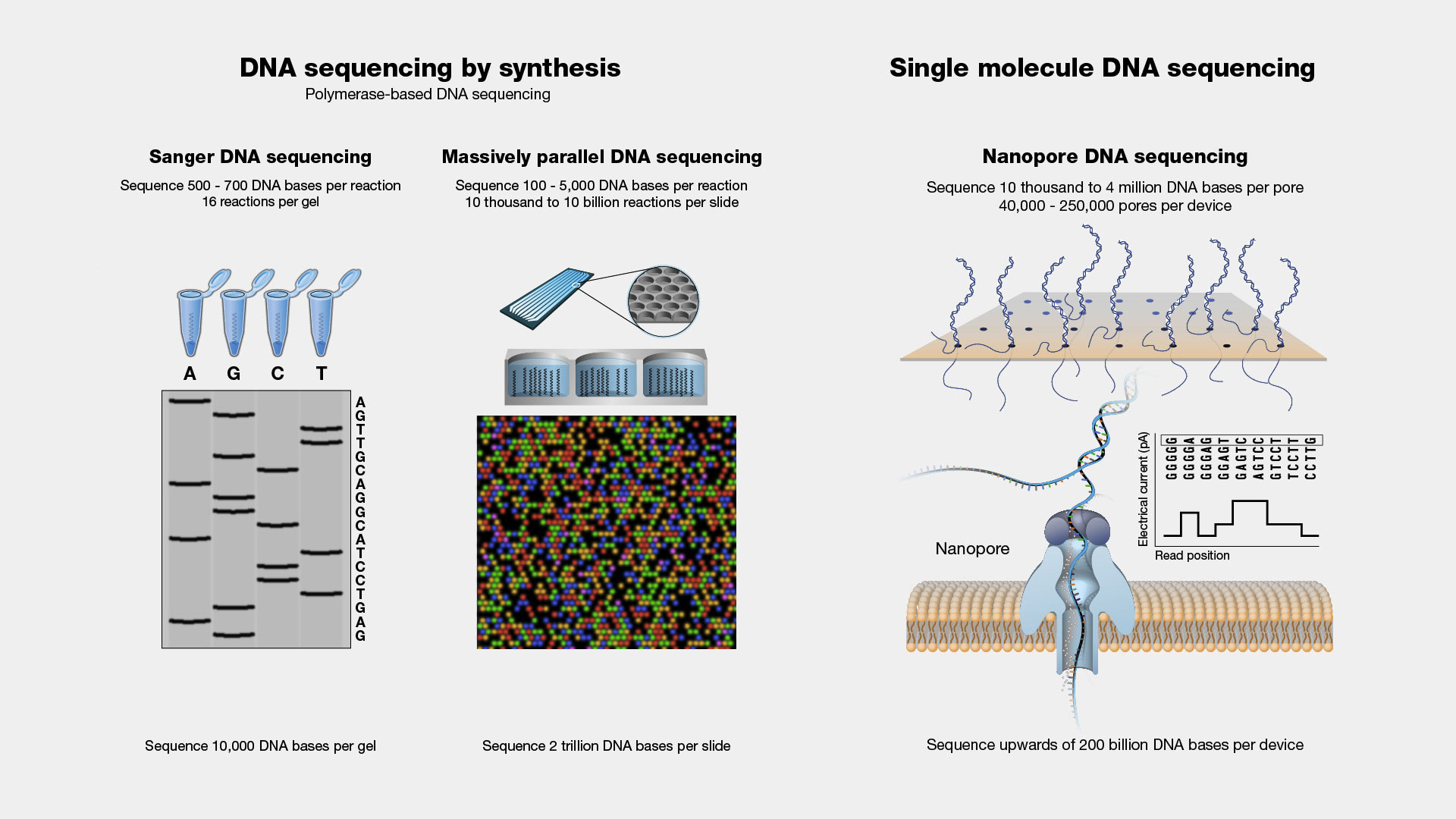Deoxyribonucleic acid, or DNA, the very blueprint of life, holds within its helical structure the secrets to our individuality, our predispositions to disease, and our evolutionary history. The process of unraveling these secrets, of reading the precise order of the nucleotide bases (adenine, guanine, cytosine, and thymine) that constitute the genetic code, is known as DNA sequencing.
DNA sequencing, at its core, is the methodology used to determine the exact order of these nucleotides within a DNA molecule. This seemingly simple task belies its profound implications and the complex technologies that make it possible. Why is this determination so crucial? Why has it become a cornerstone of modern biology and medicine? The answers lie in the very nature of the genetic code and its role in shaping life as we know it.
Unveiling the Genetic Code: A Primer
Before delving into the specifics of sequencing, a brief review of the genetic code is essential. The sequence of nucleotide bases within a gene dictates the order of amino acids in a protein. These proteins, in turn, perform a vast array of functions within the cell, from catalyzing biochemical reactions to providing structural support. Alterations in the DNA sequence, known as mutations, can lead to changes in protein structure or function, potentially resulting in disease or altered traits. It’s a cascade, where the smallest change in the initial code can have massive ramifications.
The Importance of DNA Sequencing: A Multifaceted Perspective
The significance of DNA sequencing permeates numerous scientific and medical domains. Let’s consider some key applications:
-
Disease Diagnosis and Personalized Medicine: Sequencing plays a pivotal role in identifying genetic mutations associated with inherited diseases like cystic fibrosis, Huntington’s disease, and sickle cell anemia. Furthermore, it empowers personalized medicine by enabling clinicians to tailor treatment strategies based on an individual’s unique genetic makeup. Pharmacogenomics, the study of how genes affect a person’s response to drugs, relies heavily on sequencing data to predict drug efficacy and potential adverse reactions.
-
Cancer Genomics: Cancer is, at its heart, a disease of the genome. DNA sequencing of tumor cells allows researchers and clinicians to identify the specific mutations driving cancer growth and metastasis. This knowledge is crucial for developing targeted therapies that specifically attack cancer cells while sparing healthy tissues. The identification of actionable mutations guides treatment decisions and improves patient outcomes. It’s like having a detailed map of the enemy’s stronghold, allowing for a more precise and effective attack.
-
Infectious Disease Surveillance: In the realm of infectious diseases, DNA sequencing is invaluable for tracking the evolution and spread of pathogens like viruses and bacteria. By sequencing the genomes of pathogens, scientists can identify new strains, monitor drug resistance, and develop effective vaccines and antiviral therapies. The COVID-19 pandemic underscored the critical role of sequencing in understanding the emergence and transmission of SARS-CoV-2 variants.
-
Forensic Science: DNA sequencing has revolutionized forensic science, providing a powerful tool for identifying individuals and solving crimes. DNA profiling, based on sequencing specific regions of the genome, allows forensic scientists to match DNA samples from crime scenes to suspects with remarkable accuracy. It’s a scientific fingerprint, unique to each individual, that can provide irrefutable evidence in criminal investigations.
-
Evolutionary Biology and Phylogenetics: DNA sequencing provides a window into the evolutionary history of life on Earth. By comparing the genomes of different species, scientists can reconstruct phylogenetic trees, revealing the relationships between organisms and tracing their evolutionary lineages. This helps elucidate the mechanisms of evolution and the processes that have shaped the biodiversity we see today.
-
Agricultural Biotechnology: Sequencing the genomes of crops and livestock enables breeders to identify genes associated with desirable traits, such as increased yield, disease resistance, and improved nutritional content. This facilitates the development of genetically modified organisms (GMOs) with enhanced characteristics, contributing to food security and sustainable agriculture. It’s about harnessing the power of genetics to improve the efficiency and resilience of our food production systems.
Technological Advancements in DNA Sequencing
The field of DNA sequencing has undergone a dramatic evolution since the development of the Sanger sequencing method in the 1970s. Sanger sequencing, while still used in some applications, has been largely superseded by next-generation sequencing (NGS) technologies. NGS platforms enable massively parallel sequencing, allowing millions or even billions of DNA fragments to be sequenced simultaneously. This has drastically reduced the cost and time required for sequencing, making it accessible to a wider range of researchers and clinicians.
Other emerging sequencing technologies, such as nanopore sequencing and single-molecule real-time (SMRT) sequencing, offer unique advantages, including long read lengths and the ability to detect DNA modifications. These advancements are pushing the boundaries of sequencing capabilities and opening up new avenues of research.
Ethical Considerations and Future Directions
As DNA sequencing becomes increasingly powerful and accessible, ethical considerations surrounding its use become paramount. Issues such as data privacy, genetic discrimination, and the responsible use of genetic information must be carefully addressed. Furthermore, the interpretation of sequencing data requires sophisticated analytical tools and expertise, highlighting the need for training and education in genomics.
The future of DNA sequencing is bright, with ongoing efforts focused on developing faster, more accurate, and more affordable sequencing technologies. These advancements will undoubtedly continue to revolutionize our understanding of biology and medicine, leading to new diagnostic tools, therapeutic interventions, and a deeper appreciation of the complexity and beauty of the genetic code. The journey into the genome has only just begun, and the potential discoveries that lie ahead are truly staggering. It’s a voyage into the very essence of life itself, promising to unlock untold secrets and transform our understanding of ourselves and the world around us.










Leave a Comment